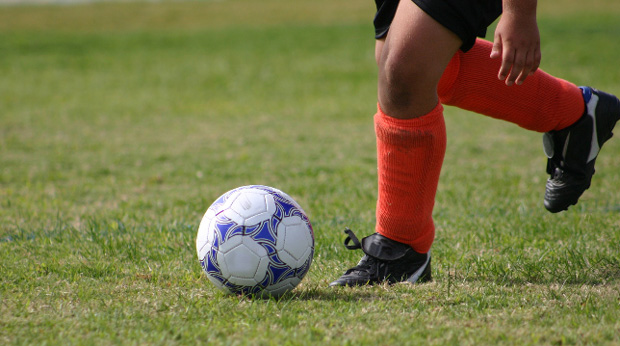| Why Every Soccer Player and Coach Should Utilize Small-Sided Games |
| Provided by: STACK The official dimensions of a regulation high school soccer field are 100 yards long and 55 yards wide. Fields can vary up to 20 yards in length and as much as 25 yards in width. The size of the field alone can be enough to make a player panic about playing soccer at the high school level and beyond. One solution? Small-sided games.Small-sided games utilize a smaller-than-regulation field and fewer players than the standard 11. They are used to target specific areas of the game, but can also be used to help fine-tune a player's skills before unleashing them onto a full-size field. To properly execute small-sided games, you must first decide the goal you want to accomplish. If you want to focus on ball movement, limit the games to 6-8 players for 10 to 12 minutes with teams competing in passing drills. If the goal is to increase shooting accuracy, split teams into 5-6 players per side and have them battle to score on a drastically smaller goal with no keeper. Goals should be on the end line, approximately 3- to 4-feet wide but can be lengthened to scale the drills for any level. Defensively, small-sided games are used to familiarize the players with certain one-on-one situations as well as playing at a disadvantage and working to force an offensive player into bad positioning. Small-sided games are used to eliminate the stress of using the whole field and getting players comfortable before playing a match. The games will teach players to move the ball with purpose and shoot accurately when they are playing on a full-sized pitch. Here are two of my favorite small-sided games to increase shooting and ball movement. Small-Side Shooting Drill
A simple small-sided shooting drill can be performed by putting two teams of five or six players against each other on a field roughly 35-40 yards long and 20-25 yards wide. Add two goals (cones or mini nets) on each end line approximately 3- to 4-feet wide. The offense must make five passes before shooting the ball, and shots must be taken no more than 10 yards away from the net. Add a second goal or extra defender or shorten the length of the shot for an advanced challenge. If the goal is to train offensive players, adding multiple goals on the end line can teach them to properly get back in defensive position and raise defensive awareness. Small-Side Ball Movement Drill
An effective way to teach controlled, purposeful passing is to set up a team of three players standing 5-10 yards away from each other in a triangle. Have the players pass the ball amongst themselves in a rotation, changing direction after every five or six passes. Once the passes are accurate, have the passing player rotate to create a new triangle. Each time a player makes a pass, a new triangle will be created allowing players to work around the field. To advance this drill, make the players stand farther away from each other and add a defender! This movement will allow the players to work the ball around a larger field more accurately. Small-sided games can be utilized to build every aspect of the game and are an easy way to progress from beginner to advanced levels. These drills will help players become more effective at moving the ball on the larger pitch, become more efficient passers and take more precise shots. Photo Credit: mikkelwilliam/iStock, thenicnic/iStock |









